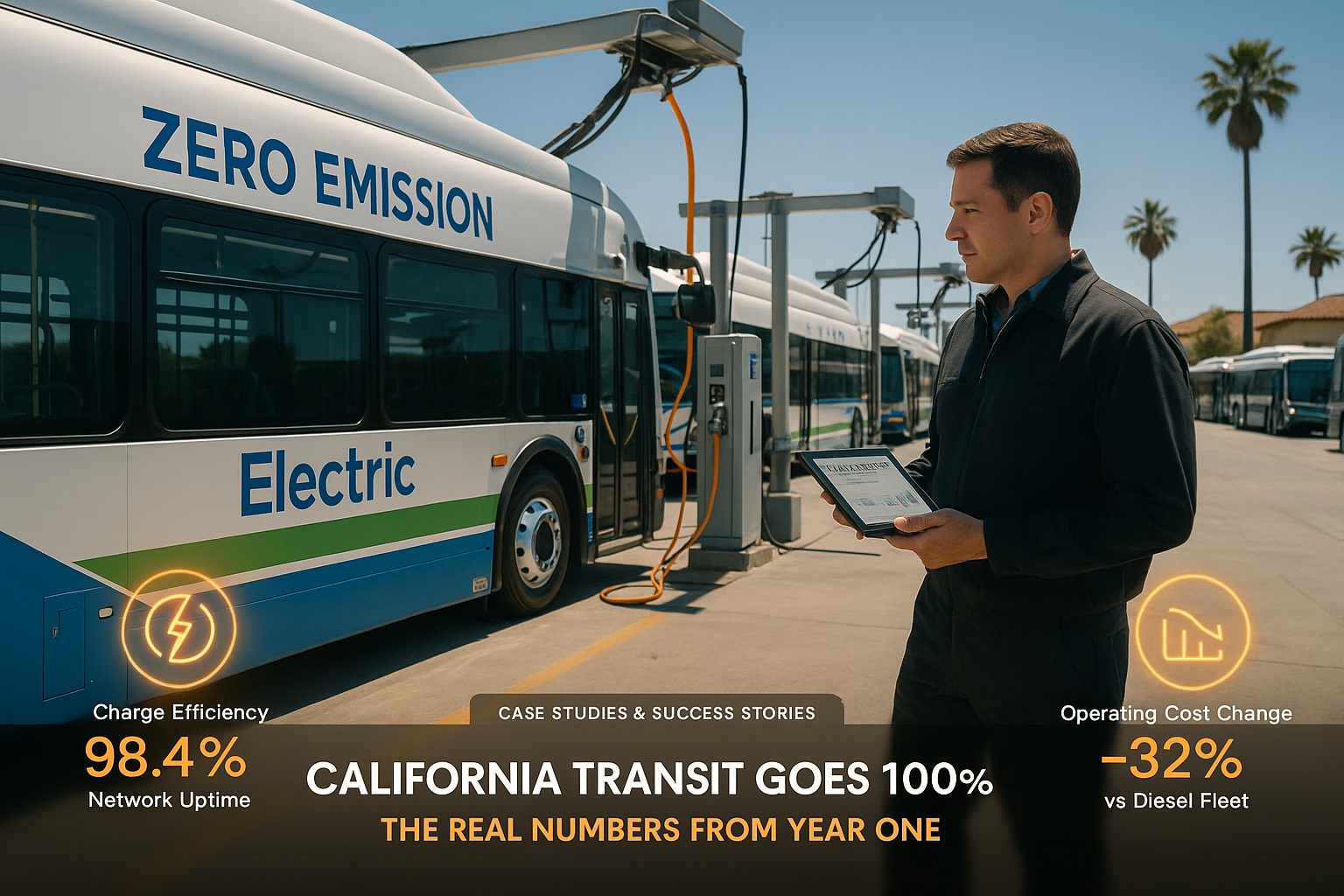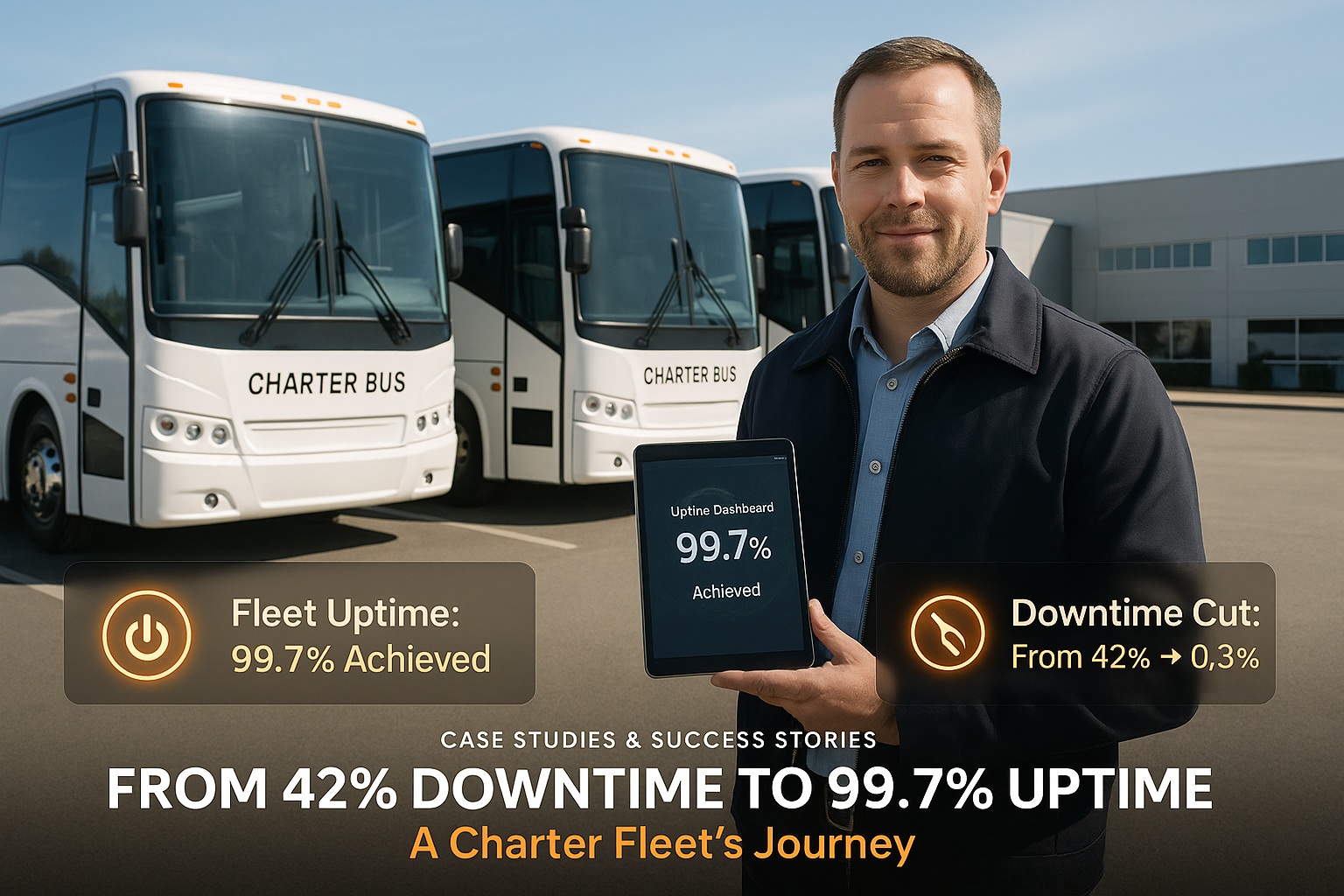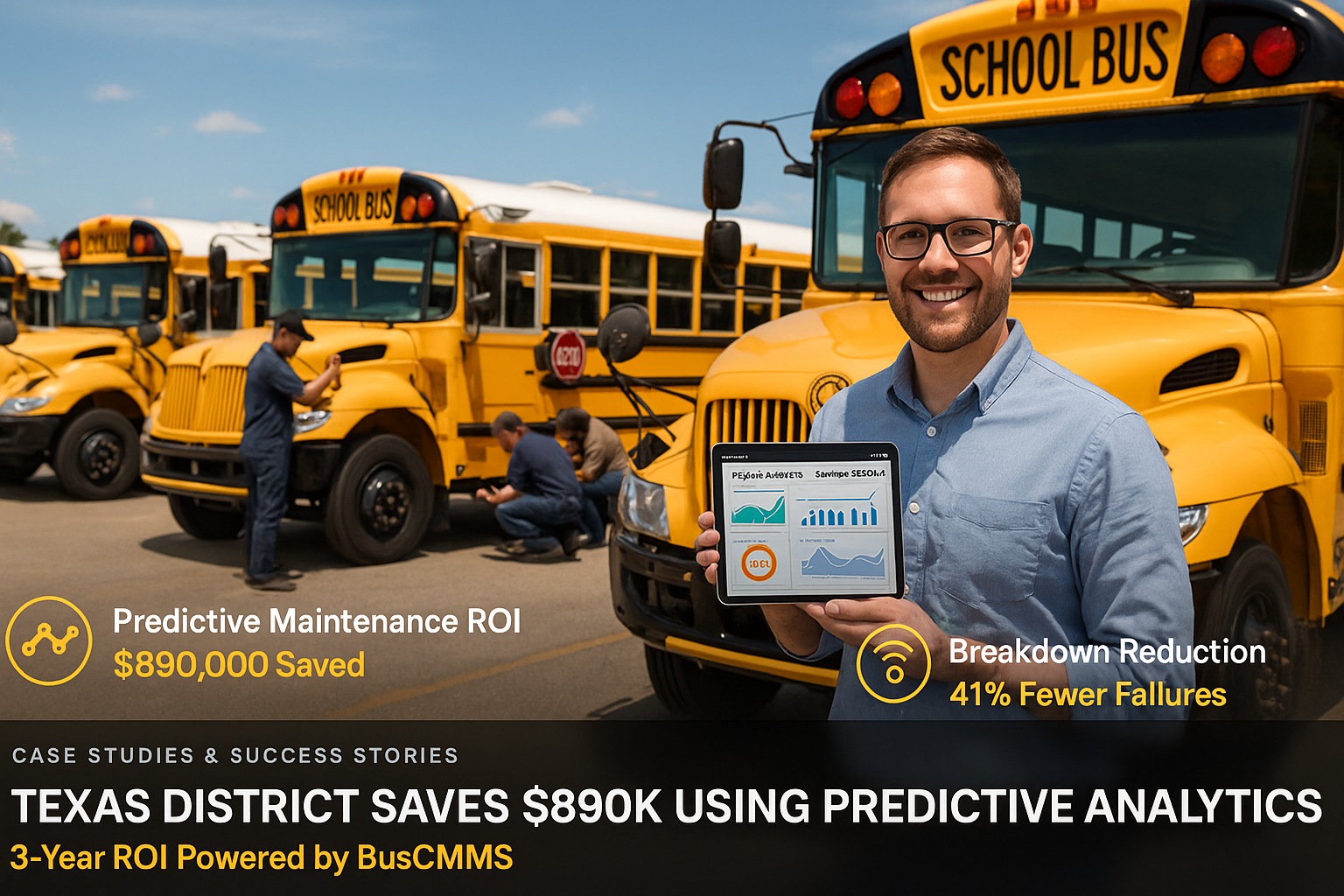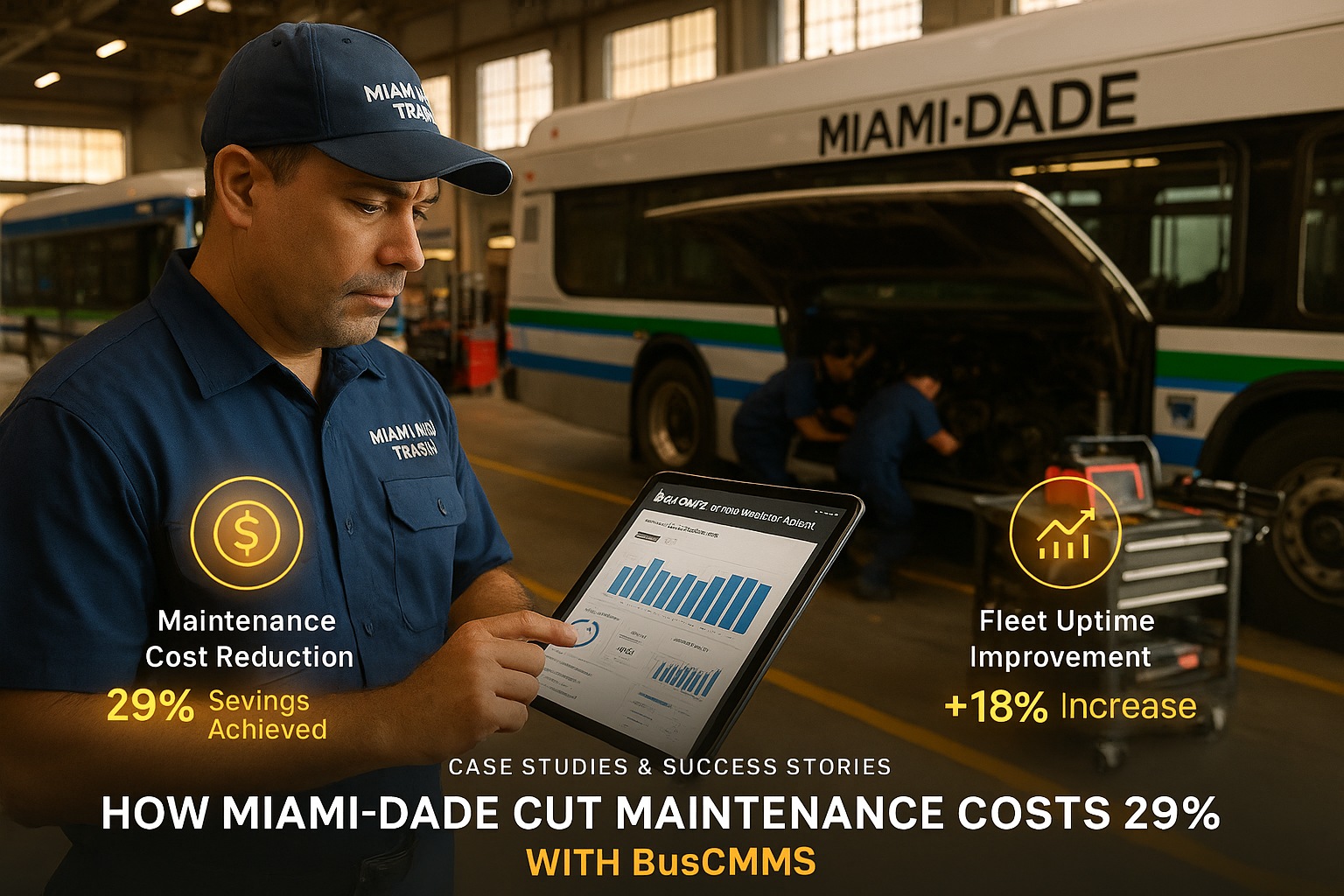School districts across the United States face mounting pressure to optimize their transportation operations while maintaining the highest safety standards. With over 480,000 school buses transporting 26 million students daily, the need for efficient school bus maintenance software has never been more critical. Manufacturing professionals in the transportation sector understand that preventive maintenance isn't just about compliance—it's about ensuring every child arrives safely at their destination.
Traditional paper-based maintenance systems are becoming obsolete, replaced by digital solutions that provide real-time insights, predictive analytics, and streamlined operations. This comprehensive guide explores how modern maintenance software can revolutionize your school bus operations, delivering measurable improvements in safety, efficiency, and cost management.
Ready to Transform Your Fleet Operations?
Join thousands of school districts already benefiting from advanced maintenance software solutions.
Getting Started Book a DemoThe Critical Role of Preventive Maintenance in School Transportation
School bus operations face unique challenges that manufacturing professionals readily recognize: aging fleets, tight budgets, and zero tolerance for safety compromises. The average school bus serves 10-15 years, covering 12,000-15,000 miles annually while making frequent stops and starts that accelerate wear and tear.
Preventive maintenance software addresses these challenges by shifting from reactive to proactive maintenance strategies. Instead of waiting for breakdowns that can strand students and disrupt schedules, districts can identify potential issues before they become critical failures. This approach not only enhances fleet safety but also extends vehicle lifecycles and reduces total cost of ownership.
Modern maintenance software integrates with existing fleet management systems, providing a centralized platform for tracking maintenance schedules, parts inventory, work orders, and compliance documentation. This integration eliminates the inefficiencies of manual processes while ensuring nothing falls through the cracks.
Key Features That Drive Bus Operations Improvement
Automated Scheduling and Alerts
The foundation of effective maintenance lies in consistency and timing. Advanced maintenance software automatically generates work orders based on mileage, engine hours, or calendar intervals. These systems send alerts to maintenance teams well in advance, ensuring services are completed during optimal windows that minimize disruption to transportation schedules.
Real-Time Vehicle Diagnostics
Integration with telematics systems provides continuous monitoring of critical vehicle parameters. Engine temperature, oil pressure, brake wear, and other vital signs are tracked in real-time, enabling immediate response to developing issues. This capability is particularly valuable for bus operations improvement as it prevents minor problems from escalating into major failures.
Comprehensive Work Order Management
Digital work orders streamline the entire maintenance process from creation to completion. Technicians can access detailed repair instructions, parts lists, and safety protocols directly from mobile devices. Photo documentation and digital signatures ensure accountability while creating a permanent record for compliance and warranty purposes.
Inventory and Parts Management
Effective maintenance requires the right parts at the right time. Modern software tracks inventory levels, automates reordering processes, and maintains vendor relationships. This capability is essential for minimizing vehicle downtime and controlling maintenance costs—key concerns for manufacturing professionals managing complex supply chains.
Enhancing Safety Through Data-Driven Maintenance
Safety is paramount in school transportation, and maintenance software provides multiple layers of protection. Automated inspection schedules ensure vehicles undergo regular safety checks, while digital checklists standardize procedures across all maintenance personnel. Any safety-related issues are immediately flagged and tracked until resolution.
The software maintains comprehensive compliance records, automatically generating reports for state inspections and federal audits. This documentation proves invaluable during regulatory reviews and provides legal protection in case of incidents. Manufacturing professionals understand that proper documentation is not just good practice—it's essential for risk management.
Predictive analytics capabilities analyze historical data to identify patterns and potential failure points. This intelligence enables proactive replacement of components before they fail, significantly reducing the risk of road-side breakdowns that could endanger students. The ability to predict and prevent failures represents a fundamental shift from reactive to predictive maintenance strategies.
Cost Optimization and ROI Measurement
While safety is the primary driver, school districts must also demonstrate fiscal responsibility. Maintenance software provides detailed cost tracking and analysis capabilities that help identify areas for improvement. Labor costs, parts expenses, and vendor performance can all be analyzed to optimize spending.
The software enables accurate calculation of maintenance costs per mile, per vehicle, and per route. This granular data supports informed decisions about vehicle replacement timing, route optimization, and budget allocation. Manufacturing professionals will appreciate the ability to apply lean principles to maintenance operations, eliminating waste while improving efficiency.
Return on investment typically manifests in multiple ways: reduced emergency repairs, extended vehicle lifecycles, improved fuel efficiency, and decreased administrative overhead. Many districts report 15-25% reductions in maintenance costs within the first year of implementation, with additional savings accumulating over time.
Implementation Best Practices for Maximum Impact
Successful deployment of school bus maintenance software requires careful planning and execution. Begin by conducting a comprehensive assessment of current maintenance processes, identifying pain points and improvement opportunities. This analysis should include input from maintenance technicians, transportation supervisors, and administrative staff.
Data migration represents a critical phase of implementation. Historical maintenance records, vehicle specifications, and vendor information must be accurately transferred to the new system. Clean, organized data ensures the software can provide meaningful insights from day one.
Training is essential for user adoption and system success. Maintenance personnel need hands-on training with mobile devices and digital work orders, while supervisors require instruction on reporting and analytics capabilities. Ongoing support and refresher training help maintain proficiency as the system evolves.
Integration with existing systems—fuel management, GPS tracking, and financial software—maximizes the value of your investment. These connections eliminate duplicate data entry while providing comprehensive operational visibility that supports informed decision-making.
Experience the Difference Professional Maintenance Software Makes
Don't let outdated maintenance processes compromise your fleet's safety and efficiency. See how leading school districts are transforming their operations.
Getting Started Book a DemoConclusion: The Future of School Bus Maintenance
The transportation industry is experiencing a digital transformation that extends far beyond vehicle technology. Modern maintenance software represents a fundamental shift in how school districts approach fleet management, moving from reactive problem-solving to proactive optimization.
For manufacturing professionals, the parallels are clear: just as production lines benefit from predictive maintenance and data-driven decision-making, school bus operations achieve similar improvements through strategic technology adoption. The result is safer, more reliable transportation that serves students and communities more effectively.
The question isn't whether to implement maintenance software, but how quickly you can realize its benefits. Districts that embrace these technologies position themselves for long-term success, while those that delay risk falling behind in safety, efficiency, and cost management.
Investment in professional maintenance software isn't just about technology—it's about commitment to excellence in student transportation. The children and families you serve deserve nothing less than the safest, most reliable transportation possible. Modern maintenance software helps you deliver on that promise while building a more sustainable, efficient operation for the future.








